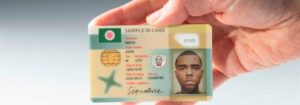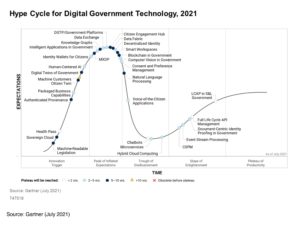Last updated 06 July 2018 — The REAL ID act is coming into force mandating that driver’s licenses and identification cards have an issuance cycle of maximum 8 years. AAMVA standards also require a durability between 5-10 years. The thinking behind the regulation is to ensure the image on an ID is renewed on a periodic basis. The US Department of Homeland Security (DHS) had requested that starting January 22, 2018, passengers with a driver’s license issued by a state still not compliant with the REAL ID Act would need to show an alternative form of identification (such as a passport) for domestic air travel.
This applied to nine states but they have been granted an extension. There is real committment to this law, as evidenced by the fact that October 1, 2020, Real ID will be the required form of state identification needed to board a plane or enter a federal facility.
This leaves States with three composition choices: Teslin, PET/PVC composites and Polycarbonate. This guide establishes the significant advantages of choosing a polycarbonate for your next generation of secure credentials.
Teslin
Teslin is a synthetic paper material that is flexible, highly printable, waterproof and tear resistant. It is often used in the ID badge industry due to its flexible surface to receive both dye-based ink jet printing and other options for offset and laser printing.
Teslin is a commonly found substrate in US driver’s licenses as well. The genuine cards you find produced on Teslin are offset printed with fine-line detailed secure printing with rainbow, guilloche and variable sized micro-text. In contrast, the back of the card is often left blank, short of machine readable technologies (barcodes) and redundant data. Personalization of Teslin cards is prepared by color laser printers. After printing, the cards are laminated with additional security features added, such as embossing and holographic lamination.
However, there is a significant weakness to Teslin; it is readily available online and its printability opens it up to all sorts of fraud. You can buy Teslin in sheets or as pre-cut templates for ID-1 (CR-80) sized cards. A simple Google search for “Teslin paper” will hook you up. This presents an easy head-start for the counterfeiter. Costs vary, but typically Teslin can be obtained at a price point of 85 cents per sheet for volumes over 1,000. Furthermore, pouch-type laminates are available and equally inexpensive.
Teslin is the go-to substrate for counterfeiters. Our recent study of high quality fakes concluded that even when genuine driver’s licenses and IDs were produced on different substrates, including polycarbonate, the counterfeiter still chose to simulate the fakes with Teslin due to its ease of manufacturing. As most of today’s genuine driver’s licenses are produced on Teslin, many front line inspectors would be unsuspecting if handed a Teslin counterfeit.
The casual counterfeiter relies on ink jet printing to mimic or simulate the genuine document’s artwork, but the results are shoddy.

Unfortunately, because Teslin cards rely on adhesives and lamination, even a genuine card can be manipulated. Counterfeiters peel back the lamination of a genuine card to alter data on the layers beneath.
PET/PVC Composite
The second option is Polyethylene Teraphthalate or PET. This material is often found in a composite card structured with layers of PVC (Polyvinyl Chloride) bonded together with special adhesives and pressure. After testing, these cards have a reported life of up to 8 years.
Manufacturing of the secure PET composite cards begins on large sheets – holding approximately 48 images – and printed utilizing offset printing presses. When securely printing on PET/PVC, each sheet is printed separately and then punched together by a machine, and laminated.
Counterfeiters use a thermal card printer to simulate these genuine cards. But the quality of offset printing found on these sheets of PET is difficult to reproduce. Micro text will be illegible, and instead of fine line details, inspectors will notice yellow, cyan and magenta colors used to imitate the spot colors of the genuine.
Like Teslin, white plastic cards (PVC) are also readily available online for as little as $75 per sleeve of 500 cards. And delamination has been accomplished in cases where altering the personal data is desired.
It is unlikely that an inspector will be able to discern PET composite from a 100% PVC card by feel as tactile features are limited primarily due to the personalization process which requires an additional layer of protective laminate over the dye diffused or dye re-transferred personalized data. But given the card can still be manipulated, and the material is again readily available, it still isn’t the most secure option.
Polycarbonate
Polycarbonate is a robust thermoplastic used for bullet-proof glass and indestructible eyeglasses. In card manufacturing, 100% polycarbonate sheets are layered to make up the strongest, most durable substrate seen today in North American driver’s license and ID cards.
Printing on polycarbonate requires a unique level of expertise, and the card building process is equally specialized. Each sheet has a purpose: security printing for the front and back, a sheet for the optically variable device, a sheet for the antennae and chip if present, and carbon enriched laser layers for personalization. Assembled together, these polycarbonate sheets require no adhesive to create a durable card; each layer has tiny microscopic hairs that fuse together under heat and pressure. An added perk: 100% polycarbonate cards can last over ten years.
In identity documents, polycarbonate makes it possible to incorporate a significant number of additional AAMVA Level 1 security features, including changeable laser images (CLIs), transparent windows inside the document, and positive and negative embossing, which are used for tactile recognition.

After punching individual cards from the PC sheets, personalization is achieved using a laser which excites the carbon in the card and raises it to the surface. After prolonged excitement, the carbon will even rise beyond the surface to create tactile features.
Polycarbonate cards can come with black-and-white photos or the slightly more expensive color photo, if required by legislation.
Polycarbonate is considered the most secure substrate for a number of reasons. First, it’s tamper-proof; once the card is formed, you cannot separate its layers. Unlike both Teslin and PET, you cannot for example, remove the top layer and change information beneath it…The card would simply break.
Second, since polycarbonate cards are personalized using laser modules, you would also need a laser to reproduce a PC card. Not exactly easy to come by a laser nor find one in a standard desktop publishing environment.

And finally, polycarbonate is considered a secure substrate and its resale is often tracked, similar to high quality paper tracking in counterfeit currency cases.
For all these reasons, counterfeits of polycarbonate are often found on Teslin card stock with personalization simulated by black toner instead of laser engraved. You can tell a genuine polycarbonate card from a fake by the sound it makes when dropped. Polycarbonate cards make a “ting” sound when you drop them on a hard surface – similar to that of a CD tapped on a hard surface.
Choosing the right substrate for you
When considering which substrate to choose for your new state driver’s license or ID, you’ll want to consider which substrate can create the highest barrier against attacks. The goal is to build in security features that are so difficult to reproduce, the fraudster would be deterred from even trying.
The cheapest substrates to produce and personalize will be those that are easily attacked. Hence, the chosen substrate shouldn’t be readily available online, and the driver’s license or ID should not be printable using standard desktop publishing accessories like a thermal printer and laminator. Polycarbonate offers everything you need: the largest range of Level 1 security features, a specialized composition process, and a long life span.
Find out more about Gemalto’s polycarbonate solutions for REAL ID compliance



